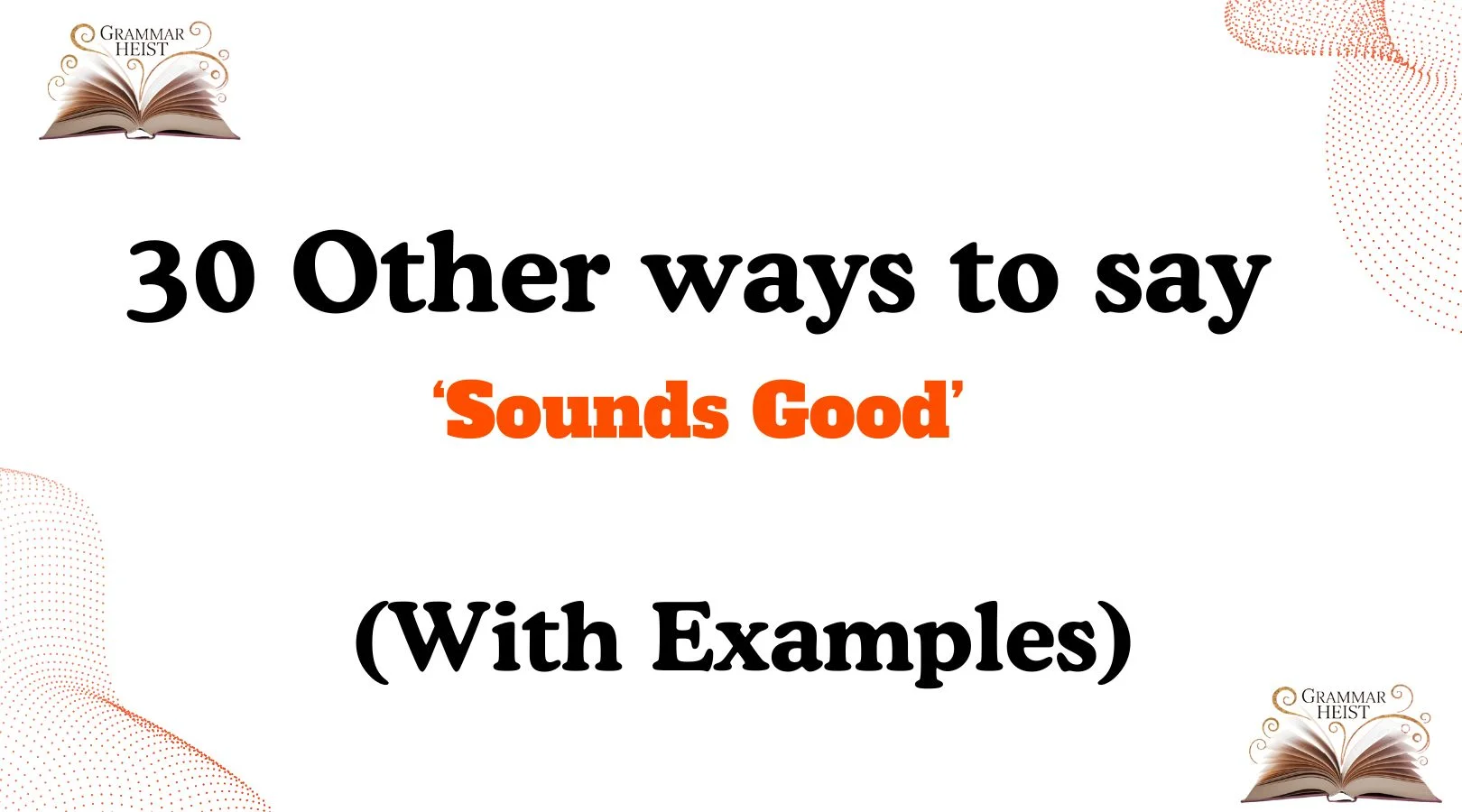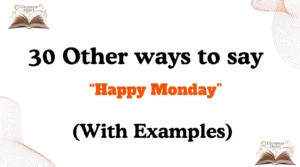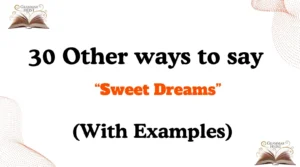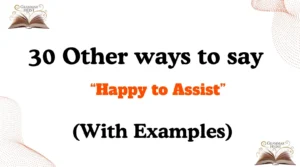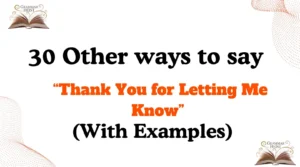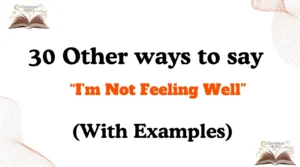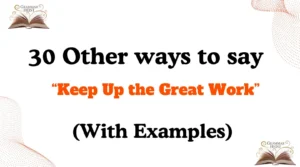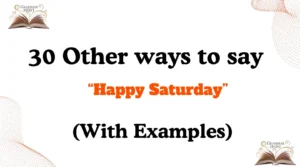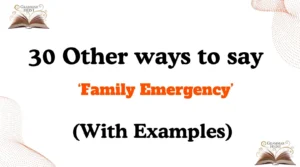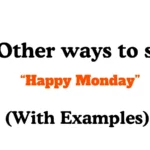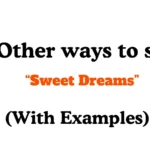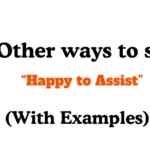Sometimes, a simple “sounds good” can feel a little plain or rushed. Choosing the right words can make your response feel more thoughtful, personal, and engaging. Using these alternatives can help you convey enthusiasm, agreement, or encouragement in a way that truly resonates with the person you’re communicating with.
What Does “Sounds Good” Mean?
“Sounds good” is a casual expression used to show agreement, approval, or that something is acceptable. It signals positivity but can sometimes feel informal or vague, which is why having alternatives can make your communication more meaningful and polished.
Is It Professional/Polite to Say “Sounds Good”?
In casual settings, “sounds good” is perfectly fine. In professional or formal communication, however, using more specific, thoughtful alternatives can demonstrate attentiveness and professionalism.
Pros and Cons
Pros:
- Quick and easy to use
- Signals positivity and agreement
Cons:
- Can feel generic or rushed
- May not convey enthusiasm or thoughtfulness in professional settings
Key Takeaway
Having a range of ways to say “sounds good” helps you communicate more effectively and makes your responses feel personal, thoughtful, and professional when needed.
Synonyms For “Sounds Good”
- Absolutely
- Perfect
- Great idea
- I’m on board
- Works for me
- Looks good
- Excellent
- Agreed
- Sure thing
- That works
- Got it
- I’m happy with that
- Fine by me
- That’s perfect
- Love it
- Very well
- Okay, let’s do it
- I like that
- That’s a plan
- Consider it done
- I’m in
- Sounds like a plan
- Count me in
- That’s settled
- I’m good with that
- Absolutely fine
- Works perfectly
- I approve
- Alrighty
- Excellent choice
1. Absolutely
Scenario: Agreeing to a colleague’s proposal for a meeting.
Examples:
- “Absolutely, I’ll join at 3 PM.”
- “Absolutely, let’s move forward with that plan.”
- “Absolutely, that sounds perfect.”
Tone: Enthusiastic, confident
Explanation: Shows full agreement and enthusiasm.
2. Perfect
Scenario: Responding to a friend’s suggestion.
Examples:
- “Perfect, I’ll pick you up at 7.”
- “Perfect, that timing works for me.”
- “Perfect, see you there!”
Tone: Positive, casual
Explanation: Indicates everything is in order and you approve fully.
3. Great idea
Scenario: A teammate suggests a new approach.
Examples:
- “Great idea, let’s implement it.”
- “Great idea, I hadn’t thought of that!”
- “Great idea, I’m excited to try it.”
Tone: Encouraging, supportive
Explanation: Adds a complimentary touch to your agreement.
4. I’m on board
Scenario: Accepting a project plan.
Examples:
- “I’m on board, let’s get started.”
- “I’m on board, count me in.”
- “I’m on board with the new strategy.”
Tone: Committed, cooperative
Explanation: Shows active participation and agreement.
5. Works for me
Scenario: Scheduling a call with someone.
Examples:
- “Works for me, let’s confirm the time.”
- “Works for me, I’ll adjust my schedule.”
- “Works for me, see you then.”
Tone: Casual, agreeable
Explanation: A relaxed way to show flexibility and consent.
6. Looks good
Scenario: Reviewing a document or design.
Examples:
- “Looks good, let’s send it out.”
- “Looks good, thanks for the update.”
- “Looks good, everything seems correct.”
Tone: Neutral, professional
Explanation: Indicates approval after review.
7. Excellent
Scenario: Responding to a completed task.
Examples:
- “Excellent, thanks for finishing it ahead of schedule.”
- “Excellent, this will help the team a lot.”
- “Excellent, I appreciate your effort.”
Tone: Positive, formal
Explanation: Conveys strong approval and satisfaction.
8. Agreed
Scenario: Confirming alignment in a team discussion.
Examples:
- “Agreed, that approach makes sense.”
- “Agreed, let’s follow that plan.”
- “Agreed, we should proceed that way.”
Tone: Neutral, professional
Explanation: Shows mutual understanding and consensus.
9. Sure thing
Scenario: Responding to a casual request.
Examples:
- “Sure thing, I’ll handle that.”
- “Sure thing, no problem.”
- “Sure thing, consider it done.”
Tone: Friendly, casual
Explanation: Friendly and approachable way to confirm readiness to act.
10. That works
Scenario: Responding to a suggested time for a meeting.
Examples:
- “That works, let’s meet then.”
- “That works, I’ll adjust my schedule.”
- “That works, see you at 2 PM.”
Tone: Casual, flexible
Explanation: Indicates acceptance and suitability.
11. Got it
Scenario: A colleague shares instructions for a task.
Examples:
- “Got it, I’ll take care of that.”
- “Got it, thanks for clarifying.”
- “Got it, I understand the next steps.”
Tone: Casual, clear
Explanation: Shows acknowledgment and understanding in a concise way.
12. I’m happy with that
Scenario: Reviewing a proposed plan.
Examples:
- “I’m happy with that, let’s proceed.”
- “I’m happy with that, it looks good to me.”
- “I’m happy with that, thanks for sharing.”
Tone: Friendly, positive
Explanation: Expresses approval with a warm touch.
13. Fine by me
Scenario: Deciding on a meeting time.
Examples:
- “Fine by me, I’ll be there.”
- “Fine by me, whatever works best.”
- “Fine by me, let’s do it that way.”
Tone: Casual, agreeable
Explanation: A relaxed, nonchalant way to approve a suggestion.
14. That’s perfect
Scenario: Responding to someone’s plan or suggestion.
Examples:
- “That’s perfect, exactly what I had in mind.”
- “That’s perfect, thank you for arranging it.”
- “That’s perfect, I’m excited to start.”
Tone: Positive, enthusiastic
Explanation: Shows strong satisfaction and agreement.
15. Love it
Scenario: Reacting to a creative idea.
Examples:
- “Love it, this approach is great.”
- “Love it, you nailed it.”
- “Love it, I’m all in.”
Tone: Enthusiastic, warm
Explanation: Conveys strong approval and excitement.
16. Very well
Scenario: Responding in a formal meeting.
Examples:
- “Very well, we’ll proceed as discussed.”
- “Very well, I’ll follow up accordingly.”
- “Very well, let’s implement that plan.”
Tone: Formal, professional
Explanation: Polite, professional acknowledgment suitable for formal contexts.
17. Okay, let’s do it
Scenario: Accepting a proposed course of action.
Examples:
- “Okay, let’s do it, I’m ready.”
- “Okay, let’s do it, that plan works.”
- “Okay, let’s do it, I agree.”
Tone: Casual, enthusiastic
Explanation: Shows readiness and agreement in a friendly way.
18. I like that
Scenario: Responding to someone’s suggestion.
Examples:
- “I like that, it makes sense.”
- “I like that, let’s go with it.”
- “I like that, it’s a great approach.”
Tone: Friendly, encouraging
Explanation: Adds a personal touch showing your genuine approval.
19. That’s a plan
Scenario: Confirming a proposed plan.
Examples:
- “That’s a plan, I’ll follow up accordingly.”
- “That’s a plan, we’re all set.”
- “That’s a plan, let’s execute it.”
Tone: Casual, agreeable
Explanation: Signals commitment and alignment with the plan.
20. Consider it done
Scenario: Accepting responsibility for a task.
Examples:
- “Consider it done, I’ll handle it today.”
- “Consider it done, no problem.”
- “Consider it done, I’ve got it covered.”
Tone: Confident, professional
Explanation: Demonstrates capability and reliability.
21. I’m in
Scenario: Joining a team project or activity.
Examples:
- “I’m in, let’s make it happen.”
- “I’m in, count me for the meeting.”
- “I’m in, excited to participate.”
Tone: Friendly, enthusiastic
Explanation: Shows enthusiasm and willingness to participate.
22. Sounds like a plan
Scenario: Agreeing with someone’s proposed schedule.
Examples:
- “Sounds like a plan, I’ll follow up.”
- “Sounds like a plan, see you then.”
- “Sounds like a plan, I’m on board.”
Tone: Casual, cooperative
Explanation: Friendly confirmation of agreement with a plan.
23. Count me in
Scenario: Joining a group activity or task.
Examples:
- “Count me in, I’ll be there.”
- “Count me in, I’m excited to help.”
- “Count me in, let’s do it together.”
Tone: Enthusiastic, inclusive
Explanation: Signals active participation and support.
24. That’s settled
Scenario: Concluding a decision in a meeting.
Examples:
- “That’s settled, let’s move forward.”
- “That’s settled, everyone agrees.”
- “That’s settled, we’re good to go.”
Tone: Confident, professional
Explanation: Conveys finality and agreement.
25. I’m good with that
Scenario: Agreeing to a suggestion or decision.
Examples:
- “I’m good with that, let’s proceed.”
- “I’m good with that, it works for me.”
- “I’m good with that, sounds fine.”
Tone: Casual, agreeable
Explanation: Shows personal agreement and flexibility.
26. Absolutely fine
Scenario: Responding to a request for confirmation.
Examples:
- “Absolutely fine, go ahead.”
- “Absolutely fine, I’m okay with it.”
- “Absolutely fine, no issues here.”
Tone: Polite, reassuring
Explanation: Conveys assurance and agreement in a gentle way.
27. Works perfectly
Scenario: Confirming suitability of a solution.
Examples:
- “Works perfectly, no changes needed.”
- “Works perfectly, thanks for arranging that.”
- “Works perfectly, I’m happy with it.”
Tone: Positive, professional
Explanation: Signals full satisfaction and appropriateness.
28. I approve
Scenario: Approving a document or plan formally.
Examples:
- “I approve, let’s move forward.”
- “I approve, this meets our standards.”
- “I approve, thank you for your work.”
Tone: Formal, professional
Explanation: Shows formal endorsement or consent.
29. Alrighty
Scenario: Casual response to a friendly suggestion.
Examples:
- “Alrighty, let’s do it.”
- “Alrighty, I’m ready.”
- “Alrighty, sounds good to me.”
Tone: Light, informal
Explanation: Friendly, cheerful way to show agreement.
30. Excellent choice
Scenario: Complimenting someone’s decision.
Examples:
- “Excellent choice, that’s the best approach.”
- “Excellent choice, I completely agree.”
- “Excellent choice, I’m happy with that.”
Tone: Supportive, approving
Explanation: Adds complimentary encouragement along with agreement.
Conclusion
Using these 30 alternatives allows you to express agreement, approval, or enthusiasm in a variety of contexts. Whether you want to be professional, warm, casual, or supportive, choosing the right phrase makes your communication feel thoughtful, considerate, and engaging.

Mia Rose is a skilled language expert with a deep passion for helping individuals master the art of writing and communication. With years of experience in the field, Marie brings a thoughtful and tailored approach to grammar, style, and language improvement. Her goal is to empower others to express themselves with clarity, precision, and confidence in every written word.
